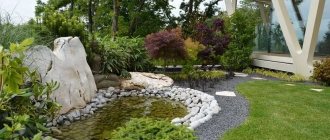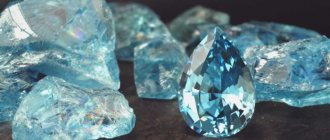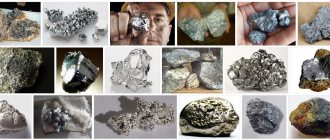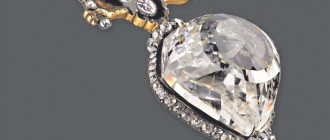All over the world we find massive crafted stones. Which sometimes weigh more than 1000 tons! But how exactly did our distant ancestors move these stones to the right place? Did they only use the strength of their hands?
Or perhaps, as some researchers suggest, our ancestors used some now lost technology?
Common sense dictates that all these stones were too heavy to move without the help of some kind of auxiliary device. But it is believed that in those days people did not have the necessary means to transport huge blocks over long distances.
Many similar objects have been discovered in Egypt. Let's talk about them. And at the same time, let’s think about how exactly they were delivered to their current location.
Southern stone
This is a block with dimensions of 20 × 4 × 4 meters, located in Baalbek, Lebanon. It went down in history as the largest man-made stone in the world. The object weighs more than 1000 tons. Two other monoliths, similar to and larger than the southern stone, were later discovered in a quarry at Baalbek. The first weighs 1300 tons and measures 20 meters by 4.5 meters by 4.5 meters, while the second weighs 1650-1670 tons and is also about 20 meters long.
Huge stones in Russia
Since ancient times, everything unusual and incomprehensible has been endowed with magical powers and acquired legends and traditions. Large natural stones in Russia, the size of which amazes the imagination, have not been spared. It is impossible to find a scientific explanation for the appearance of many of them, so since ancient times they have been worshiped and prayed next to them, hoping that the prayers will achieve their goal.
Blue-stone (Blue stone)
The location of the stone, which is now located near Lake Pleshcheevo, was previously different - a ravine next to the Borisoglebsky Nadozerny Monastery. Here in the 9th-11th centuries. pagan religious events were held, and the boulder was considered sacred.
In normal weather, the surface of the boulder has the usual grayish color, but after rain it turns blue - the rays of the sun are refracted on the faces of biotite and quartz that make up the block.
Until the beginning of the 17th century, the stone remained in its place; sometimes local residents set up playgrounds near it, disturbing the peace and quiet of the monastery lands, which did not suit the inhabitants of the monastery. Deacon Onufry, on the advice of the monk, buried it so as not to tempt the devil. After some time, he crawled out again due to precipitation and subsidence of the soil. In the 18th century They decided to use the huge stone as a foundation for the construction of a church and carried it across the lake on the ice, but the ice could not bear the weight and broke. The stone block ended up at a depth of 1.4 m.
After seven decades, she found herself north of the place where she rested at the bottom. Scientists found an explanation for its “emerging” in natural phenomena: ice movement, strong winds. Previously, a large stone protruded above the ground higher than a person’s height, but now it is gradually sinking into the soil and its height is no more than 0.6 m, its length is about 3 m, its width is about 2 m. According to some sources, the weight is 4 tons, according to others - 12 tons .
Nowadays, near the sacred stone, lovers of mysticism conduct their research and meetings; walking trails have been laid to it, and it is a cultural monument.
Babiy Stone (Shakhmatovo estate, Moscow region)
The huge cult stone is known as the venue for poetry readings dedicated to A. Blok and has its own history. He appeared in the estate after, by order of the first owner (the poet’s grandfather), he was moved here from the bank of the stream, where next to him there was another boulder, on top of which four people could sit. One stone migrated to the estate, and the second disappeared. Nobody knows where.
The boulder, rolled in by glaciers, received an unusual name - “Woman's Stone” in ancient times, when it was endowed with mystical powers that helped a woman in childbearing and in the fight against various female diseases. Its surface has recesses, shaped like a chair, where women sit comfortably and address their problem to an unknown force. Stories about the miraculous properties of the block are passed on to this day, so the flow of people who want to try its power does not dry out.
On the stone there are traces of an eight- and four-pointed cross that was once carved out. They indicate that the Orthodox Church at one time fought against the cult of stones revered by the local population.
Mysterious Kindyakovsky stone
In a swampy area near the Kimershi River near the village of Kindyakovo in the Shutovoy Forest there is an unusual large quartzite stone (1.3 x 0.6 m), nicknamed Kindyakovsky. It is unusual because its history is covered in legends and traditions, rooted in ancient times.
Legend has it that in ancient times, wanderers came to Moscow from the White Sea and brought with them the unusual Alatyr stone, broke it into nine stones and laid it out along the border of Muscovy. It is as if these stones rest in the masonry of the walls of Kolomna, Serpukhov, Dmitrov, Tula, Volokolamsk, Vereya, Naro-Fominsk and are powerful amulets that protect these regions from all sorts of misfortunes and troubles.
People go to them to heal, pray, ask for help, and once upon a time the Moscow prince brought his army to the Kindyakovsky Stone so that the warriors would gain strength and stamina before a difficult campaign against the horde. Sick children were also brought here to perform a healing ritual - they poured water from a stream on the stone, collected it and washed the child, dressed him in new clothes, and hung the old ones on bushes and trees.
Now a path has been built to the stone so that it can be reached through muddy terrain. They come here all year round with their problems and requests.
Karelian Horse-stone
Kamenets Island on Lake Ladoga in Karelia is known to exotic lovers not only as a beautiful place, but also as the owner of a unique attraction - a huge granite boulder.
The dimensions of the stone are 9x6 m, height is about 4 m, weight is approximately 750 tons.
During pagan times, horses were walked on the island in the summer, and a horse was slaughtered on a huge stone and rituals were performed as a sign of gratitude to the spirits of the island. Hence the name of the island and the boulder - Konevets and Horse-stone.
When the Monk Arseny came to the island, with the help of prayers and the icon of the Mother of God, he cast out demons from this place. All evil spirits and snakes left the island. What’s interesting is that there are snakes on all the surrounding islands, but there are none on Konevets.
The chapel of Arseny Konevsky, built in 1895 in memory of all these events, now stands on the stone. There is no information about when the first chapel was built.
Mushrooms made of stone in Altai
People come to the Akkurum tract in Altai to admire the amazing creation of nature - Stone mushrooms. They really resemble a tall mushroom, but only made of stone. Its base reaches a height of 7 m or more, and on top of the “leg” there is a “cap” - a huge stone. Fantasies picture huge ancient giants in their heads who built these mushrooms, but everything is much simpler.
Scientists explained their appearance by natural processes, as a result of which loose rocks are eroded, while denser and harder rocks remain intact. The base consists of loose rocks, and the top, the cap, is hard and durable. Now in the gorge there are young mushrooms, their height is no more than 2 m, and old ones - they are much taller and reach a height of 5-7 m.
This unique place fascinates with the beauty of its primeval nature, unusual landscapes, and true connoisseurs of everything beautiful and unusual on our amazing planet come here.
A stone in the Sayan Mountains hanging by a thread
In the Western Sayan Mountains there is the Ergaki Nature Reserve, where there is an unusual cluster of rocks that resembles a huge hero sleeping on his back. The silhouette of a face is clearly visible against the sky; you can see arms folded on the chest, legs and long hair. This place is the Sleeping Sayans. The legend says that the hero protects these lands, the treasures in the depths, and if necessary, he will come to the defense.
Another legend tells that the hero will wake up when the Hanging Stone falls. It is named so because of its amazing feature - it hangs on the mountainside literally by a “hair’s bread”, because only 1 m² of its area is in contact with the surface of the mountain, and it seems that it is about to roll down.
A huge piece of rock appeared here during the movement of glaciers several million years ago. Since then, it has not changed its position even during earthquakes. Several times they tried to move it from its place with the efforts of 30-40 people, but without results - the block weighs about 600 tons.
In the 70s of the last century, it was noticed that the stone was swaying slightly and they thought that it would still fall, but no - the Hanging Stone continues to hang over a kilometer-long cliff and has even stopped swaying.
People come to the Ergaki Nature Reserve to see rare plants, admire amazing landscapes and unique creations of nature.
Bizarre stones in Khakassia
In Khakassia, 40 km from the village. Shira, located on the shore of the lake of the same name with healing water, there is a stone park (stone forest, Shirinsky pillars). This is the name given to the place where there are a large number of stone monoliths scattered throughout the forest. They appeared here millions of years ago during the collapse of the glacier.
The bizarre shape of the huge stones surprises with their variety: there is a stone with a bowl-shaped depression on the top, there is a “submarine”, and there is a stone mushroom, the cap of which seems to be man-made - the edges are round and smooth. The inclined cap, interestingly, rests on the base with only three support points.
All these unusually shaped stones were created by wind, rain, melting waters, but looking at them, it seems that they were created by the hand of a giant, posing a riddle for future generations.
5 / 5 ( 2 voices)
Stonehenge
Wiltshire, UK
The most charismatic megalith on the planet is Stonehenge. This cromlech was erected either by the ancient Romans, or by the Celtic sage Merlin, and inside they watched the sun, treated the sick, or created sound mirages - one hypothesis is more enchanting than the other. But this is the case when in a serious conversation there is no shame in referring to British scientists: they have been poring over the mysteries of Stonehenge since the 17th century. The best time to come is on the summer solstice, June 20 or 21, when modern Druids hold a holiday there. Only on this day you will be able to approach the mysterious stones, and not look at them from behind a fence, and you will also listen to enchanting Celtic music and watch intricate dances.
Don't miss: London is affordable: a local advises how to save money in the British capital
Maltese megalithic temples
Malta
There is so much interesting on the miniature islands of Malta that there is enough for two weeks of an eventful vacation. Start with Ggantija, the oldest of the local megalithic complexes. The two temples and the wall around them predate the Egyptian pyramids. All this is made of huge stone blocks, which, according to legend, were carried on the shoulders of ancient giants.
If you like it, set aside time for the rest of the temples. Hajar Qim, Mnajdra, Ta' Hajrat, Sorrow and Tarxien are all protected by UNESCO. In Tarxien, you won’t miss the remains of a skatua with thick legs - this is one of the Paleolithic Venuses. And to get better acquainted with the prehistoric standards of female beauty, go to the Museum of Archeology: a full-length figurine of an obese Venus is kept there.
Don't miss: 14 Ways to Experience Malta Cave Life: The World's Most Amazing Rock Cities
yellow diamond
Record find: a 439.86-carat De Beers diamond, found by the company of the same name in South Africa in 1888, was subsequently cut into a diamond weighing 234 carats.
Record sale: Graff Vivid Yellow stone (100.09 carats) sold in 2014 at Sotheby's in Geneva for $16.3 million. The price per carat was $162,853. Deposit - Sierra Leone.
What can be made from large stones at the dacha
Large boulders and blocks can be used in many practical ways in the country.
Elements with a flat surface can be used to arrange a summer area or patio. Large boulders made of strong rocks (granite, marble) can become the basis for a table and chairs. To make the design more comfortable, stone seats can be covered with decorative pillows.
Relaxation area made of stone Source houzz.com
You can make a stylish barbecue from small cobblestones and metal rods.
Gabion in the shape of a barbecue - a practical solution for a recreation area Source gabion-russia.ru
The stone is also used in the construction and decoration of stoves, baths, saunas, and outbuildings.
Large gabion with barbecue Source pinterest.ca
Care and maintenance
Natural stone does not require special care. It is enough to remove fallen leaves, remove weeds and clear away dirt. To make maintenance easier, it is important to choose the right type of stone. For example, white marble looks very beautiful in the garden, but quickly loses color and is susceptible to rotting. Whereas a granite boulder is resistant to moss and mold.
Formations on stones can be removed without problems with acid solutions, but not all rocks can withstand their impact. The instructions usually indicate such information.
Main characteristics of natural stones
Regardless of what types of stones there are, the selection of suitable materials is made based on an analysis of three main characteristics:
- Colors . Only at first glance it may seem that the stones do not differ in the variety of colors. In fact, they represent almost the entire shade palette - from translucent and perfect white to impenetrable black. Moreover, many rocks have a characteristic pattern that is visible when cut.
- Facts . This criterion cannot be constant even for stones of the same type, since it depends on the area where a particular mineral is mined. The location affects the coloring and overall quality of the stones - density, strength, internal structure.
- Size . Types of natural stones are necessarily sorted by width and length, which are the result of primary sawing. Thickness, which depends on further processing of the front surface, is also considered an important parameter.
Garden path made of colorful pebbles
Appearance of boulders and features of choosing a specific model. Wide range of shades
A great way to improve and enhance not only the style of the site, but its functionality and comfort, is to use stones, a variety of types and in various techniques.
Before considering the options, let's define the concept.
A boulder is a piece of rock that has been polished by water flows and carried by glaciers. The size can vary from 10 cm to 10 m. Smaller fractions, rounded and smoothed with water, are called: pebble, pellet, round, cobblestone (10-30 cm), pebbles (1-10 cm in diameter). Sand and screenings (less than 5 mm) are widely used. Roundness has a different genesis; it can be associated with the polishing of the rapid water mass of mountain streams during transportation.
An unrounded rock fragment with sharp corners is called a block.
The size of the site or technical capabilities do not always allow placing a block or large boulder; then you need to pay attention to irregularly shaped rock fragments, the diameter of which along the long axes is over 100 mm (small boulder).
All of the listed sizes of stones are used in landscape design for various purposes: paving, borders and fences, retaining walls, rock garden, rock garden, stair steps, garden furniture, etc.
The purpose of a natural stone is determined by the type of rock and the processing technique that allows you to reveal its true beauty. Of course, a certain processing of the sharp edges of boulders and blocks can be acquired through aeolian activity, but this is often not enough. Additionally, techniques such as polishing, grinding, chipping, sawing, “scratched surface”, aging and heat treatment are used.
When it comes to choosing the type of material, the market today offers many available options. But the wider the choice, the more difficult it is to make it. To understand how stones will cope with their assigned role and combine with style and surroundings, you need to know their structure and origin. Let's look at three types of rocks that differ in petrographic composition:
Volcanic rock boulders have a strong base and heavy weight, making them suitable for solving most problems. Presented in a wide range of colors and shades, they look very picturesque, both in their original form and after processing. This group includes granite, light felsite and dark basalt, dunite in light and dark green tones.
Sedimentary rock stones are characterized by a layered porous structure, do not withstand impact well, and have low abrasion rates. However, they are easy to process, and the variety of colors and types allows them to be used in decoration, landscape design and construction. First of all, these include tuff, shell rock, sandstone and dolomite.
Shungite, marble and slate are metamorphic rocks. If we talk about their origin, they have a sedimentary nature and a layered structure. Unlike the second type, they are distinguished by higher strength. A variety of colors, from light gray to black, allows you to create an individual and interesting design.
Now all that remains is to make a choice and decide on the destination.
Prehistoric observatory in Zorats Karer
Sisian city, Armenia
In the Syunik region of Armenia, 220 large stones stick out of the ground, many with through holes. This is the megalithic complex of Zorats-Karer, or Karahunj, and scientists quarrel about it like first-graders. Some argue that the megaliths appeared 7,500 years ago and were a well-equipped observatory with holes for observing the sun, moon and stars. Others believe that Zorats-Karer appeared “only” 4,000 - 5,000 years ago and served as a necropolis, otherwise where did the stone mounds come from? To put forward your own version, come to Karahunj early in the morning, when the surrounding mountains are especially beautiful and the first rays of sun are breaking through the mysterious openings.
This is interesting : 12 reasons to fall in love with Armenia
Moai statues
Easter Island, Chile
The small Easter Island in the Pacific Ocean is “inhabited” by idols with disproportionately large heads. The aborigines carved them out of the slopes of the extinct volcano Rano Raraku, and then placed them around the perimeter of the island. Most likely, the idols depicted deceased ancestors: it is not for nothing that they look inland, and not at bounty beaches with clear water. But how they dragged multi-ton figures is an unanswered question. The funniest theory is that the statues themselves walked with the help of the islanders, who swung them with ropes. To prove it, enthusiasts (including Thor Heyerdahl) made copies of the idols and carried out risky experiments.
To find megaliths closer to home, check out the interactive map. Select a country from the list or click on the map. The site is in English, but it's easy to understand.
Materials used to make artificial boulders
Boulder stones for landscape design have an impressive weight and are not cheap. Since the price consists of the cost of the stone itself, loading, transportation and unloading. In addition, due to the large mass, it is not always possible to move the boulder to the desired place. In this case, they are replaced with artificial ones. For imitation of natural stone made of fiberglass and polystone, you will also have to pay a considerable amount. However, if you wish and have time, it is not at all difficult to create beauty with your own hands.
Papier-mâché and cardboard
The material can be anything: papier-mâché, cardboard, brown packaging paper, polyurethane foam, fine mesh, household waste (bags and plastic bottles), polystyrene foam.
There is probably no such person who would not make crafts from papier-mâché during labor lessons at school. Therefore, the technique is familiar and simple. Take a form, for example a cardboard box, and paste it with strips of newspaper using flour paste. Due to its light weight, this craft can be any size. The finished product is left to dry completely, after which it is covered with aerosol paints.
Instead of cardboard, you can use thick packaging paper. In addition, with its help it is easier to set the desired shape for the future boulder.
Styrofoam
This material is even easier to work with. There is no need to waste time drying each layer of paper.
From a piece of foam plastic, using a construction or electric knife, any shape is cut out, which is limited only by your imagination. After which it is covered with a solution of 3-4 layers, prepared from one part cement and three parts sand. For better elasticity, add a little liquid soap to it. Each subsequent layer is applied after the previous one has completely dried.
With polyurethane foam the result will be the same.
Fine mesh
You can collect construction waste: pieces of plaster, broken bricks, etc., and wrap them with metal mesh. Then, as in the previous case, layer by layer is covered with concrete mortar.
Household waste
Every home accumulates a large number of plastic bags and plastic bottles, which can be disposed of in an unusual way. To do this, just take a garbage bag the size of the future boulder, put the trash in it and give it the desired shape. Then secure everything with wire, which is best wound in different planes. Now you will need old and unnecessary bed linen, shirts, etc. They should be ripped open in advance, freed from seams and torn into small pieces. Next, a liquid cement mortar is prepared (from cement and water), into which the prepared fabric is dipped and applied to the mold, according to the papier-mâché principle, in several layers.
To make homemade boulders look realistic, various techniques are used.
Using a spatula, create dips and folds when the solution has not yet set.
To obtain a more porous structure, replace 1 part sand with peat moss (sphagnum) and make a solution as follows: 2 parts sand, part cement and part moss.
To create a rough surface, use an abrasive sponge or wire brush.
To give it a wrinkled appearance, pass over the stone with a crumpled plastic bag.
To avoid cracking, finished products are dried in the shade. After complete drying, coat with three layers of water-based concrete primer. Then acrylic exterior paint is applied with a sponge. If desired, the products are varnished.
With a creative approach to the process, you can create fantastically beautiful boulders for your garden with your own hands, which in texture will look like natural ones.
Where to get stones for landscaping
Having decided on an idea for a garden composition, you can begin the task of finding the necessary material and transporting it to the site.
To get stones for the garden for free, you will have to be smart. It is worth searching the nearby areas for abandoned quarries, quarries, and dry reservoirs. Suitable stones can be found at demolished buildings and construction sites. If the areas are protected, you can negotiate with the workers to purchase the material.
Steps made of processed stone Source yandex.uz
You should not take stones from abandoned summer cottages and garden plots yourself: the territory may be privately owned, so this will be considered theft. It is better to go around the neighbors and find out from them the contacts of the rightful owner.
Pond and paths lined with stone Source ledidesign.ru
The easiest way to get stone for landscaping is to buy it from stone processing enterprises or companies that sell products for landscaping garden areas. The price varies depending on the size (fraction), type of stone (boulders, pebbles, crushed stone) and rock (granite, tuff, shell rock, expanded clay, dolomite, etc.).
Bright composition with a dry stream made of colored material Source archidea.com.ua
The material is sold in different units of measurement:
- fine-grained pebbles, pebbles, cobblestones are sold in packaged bags (40, 60 kg) or kilograms (1, 10 kg or ton);
- tumbled stone, flagstone, hewn tiles, slabs of granite, marble, etc. are sold per m2 (the price varies depending on the type of rock and thickness);
- large solid pieces of rock are sold in cubes and m2.
To determine approximately how many stones will be needed, you need to estimate the scale of the composition: 2-3 tons of material is approximately 1 m3.
Decorative stone for exterior decoration of the house
Pros:
| It has a beautiful appearance that will delight your eyes every day. All this thanks to high-quality, automated production; |
| It is distinguished by its environmental friendliness; this material does not contain harmful substances that could harm others; |
| Finishing occurs quickly and without problems, since the material is light; |
| There is a wide variety on the SSK website, thanks to us you can look at a large number of options and choose the best one; |
| It is a durable material that will serve you for many years; |
| Leonardo Stone, like other manufacturers of this product, produce large-sized stone with fire-resistant properties, which will allow the material to hold back flames for a long time; |
| It has high strength and frost resistance. |











